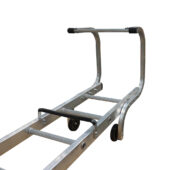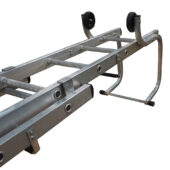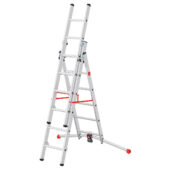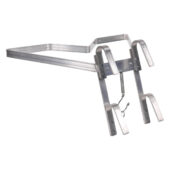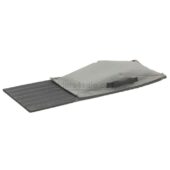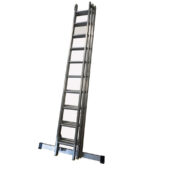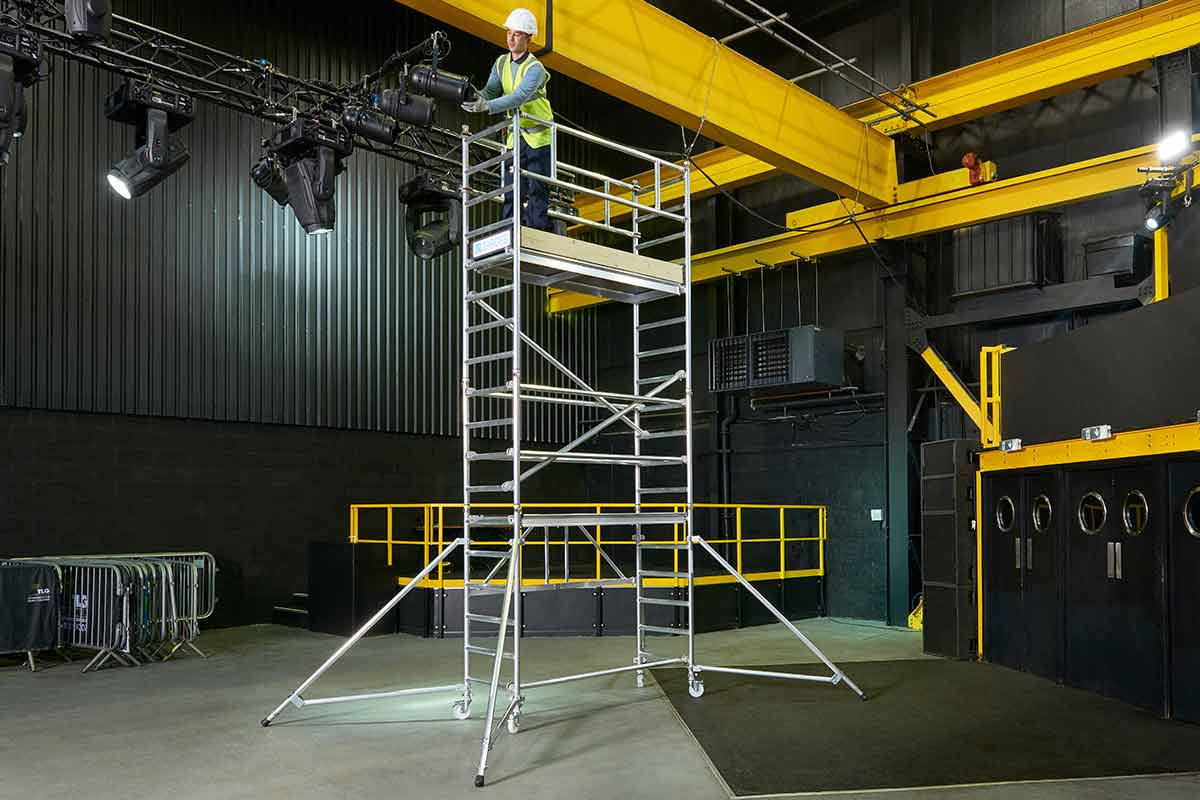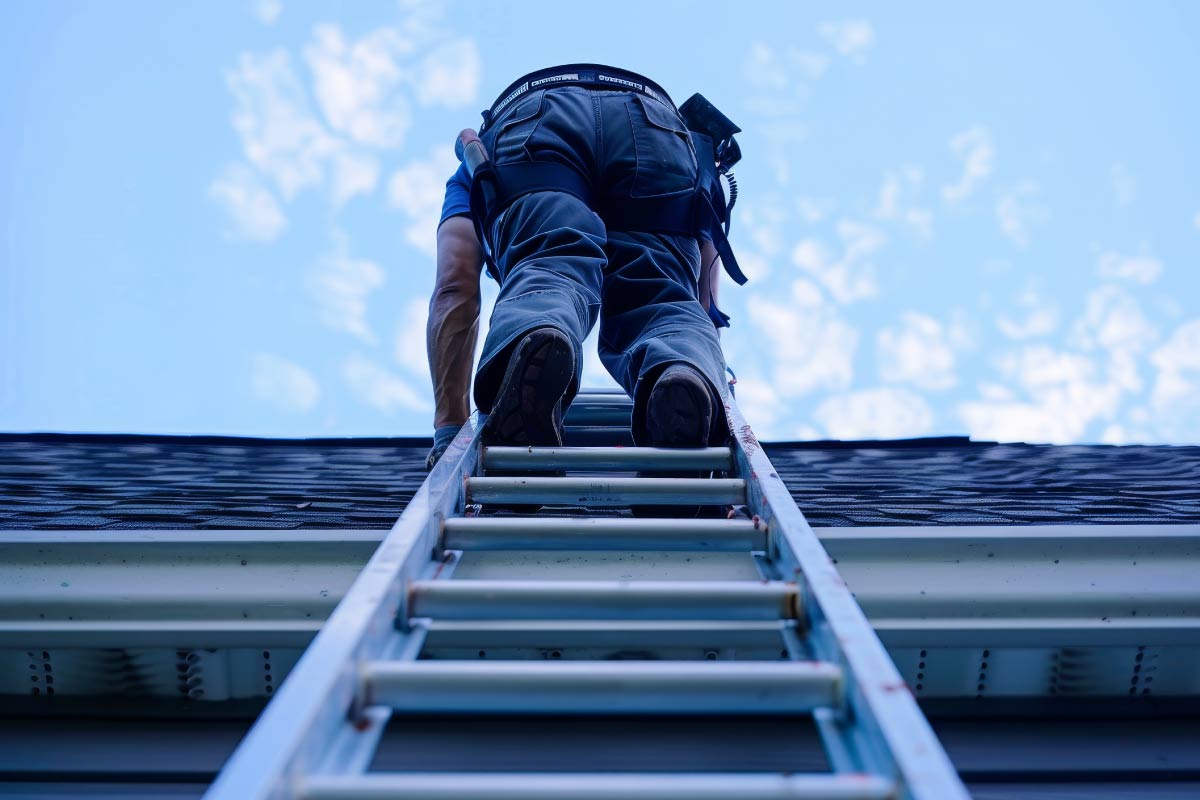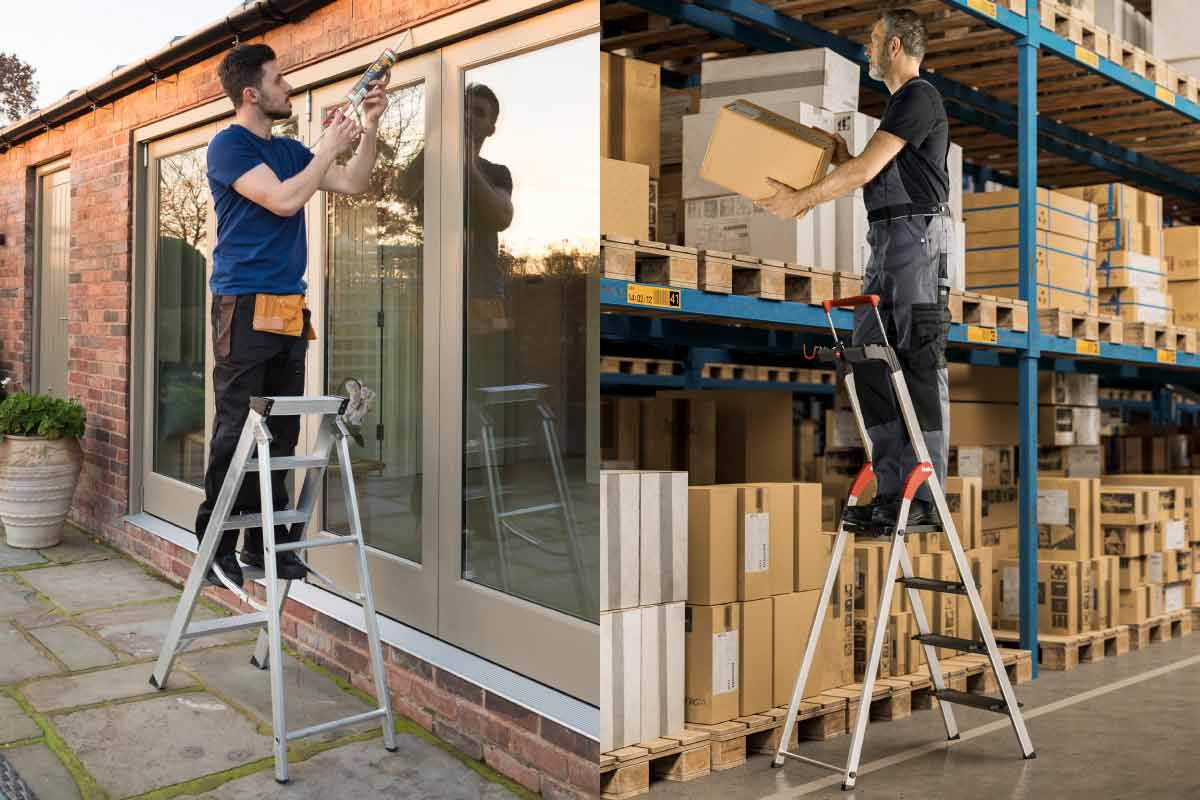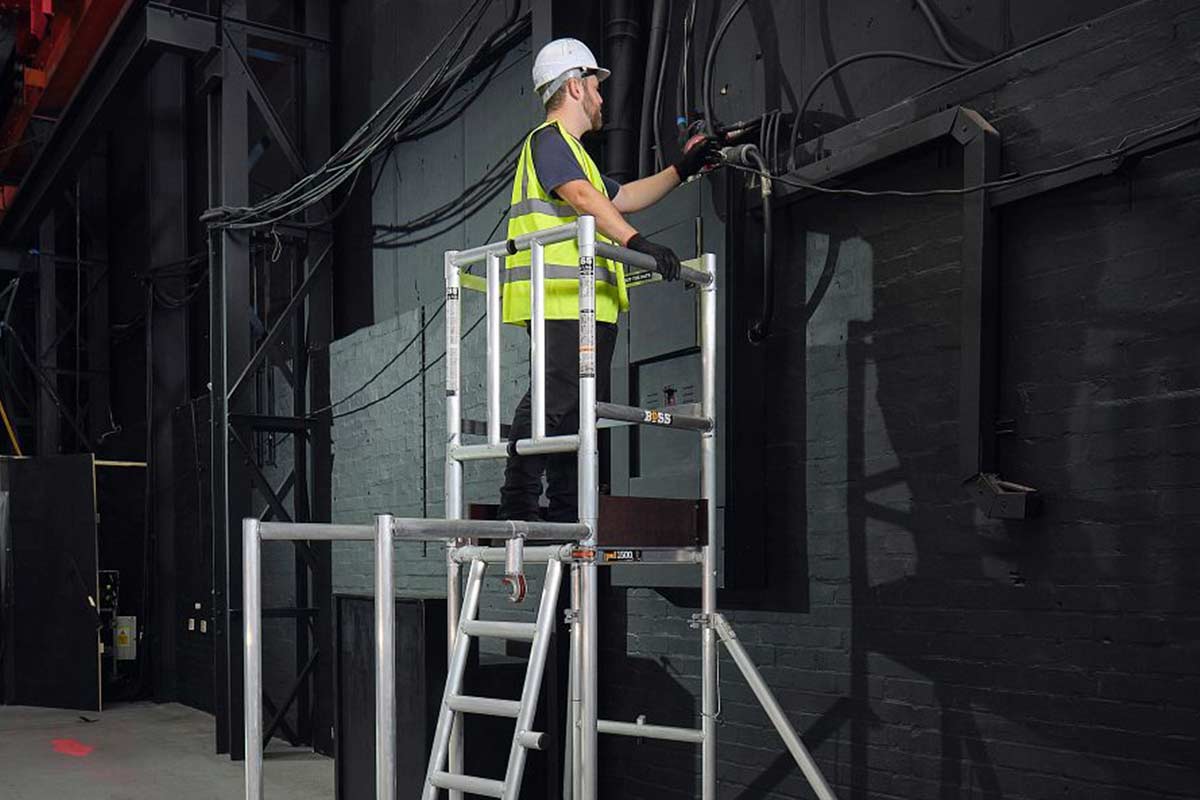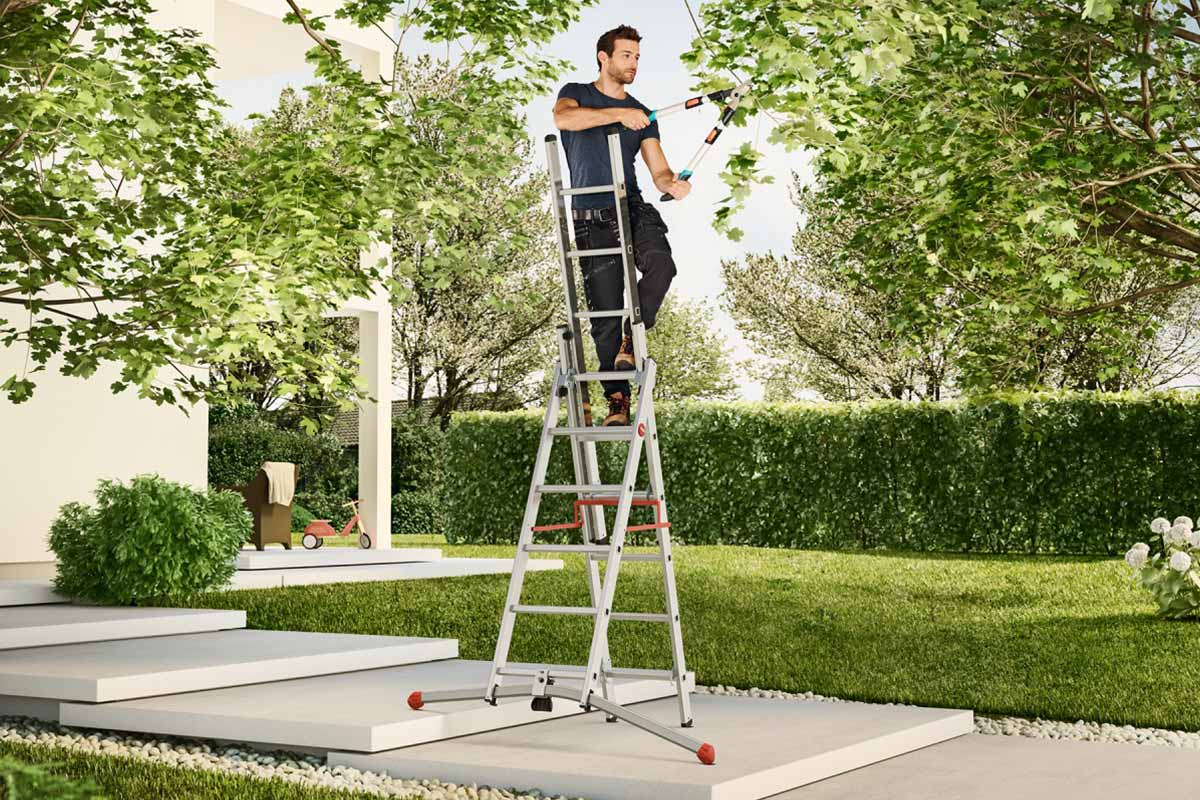Complete Roof Ladder Guide: How to use a Roof Ladder & What to Buy
May 24, 2024 | Nate Cord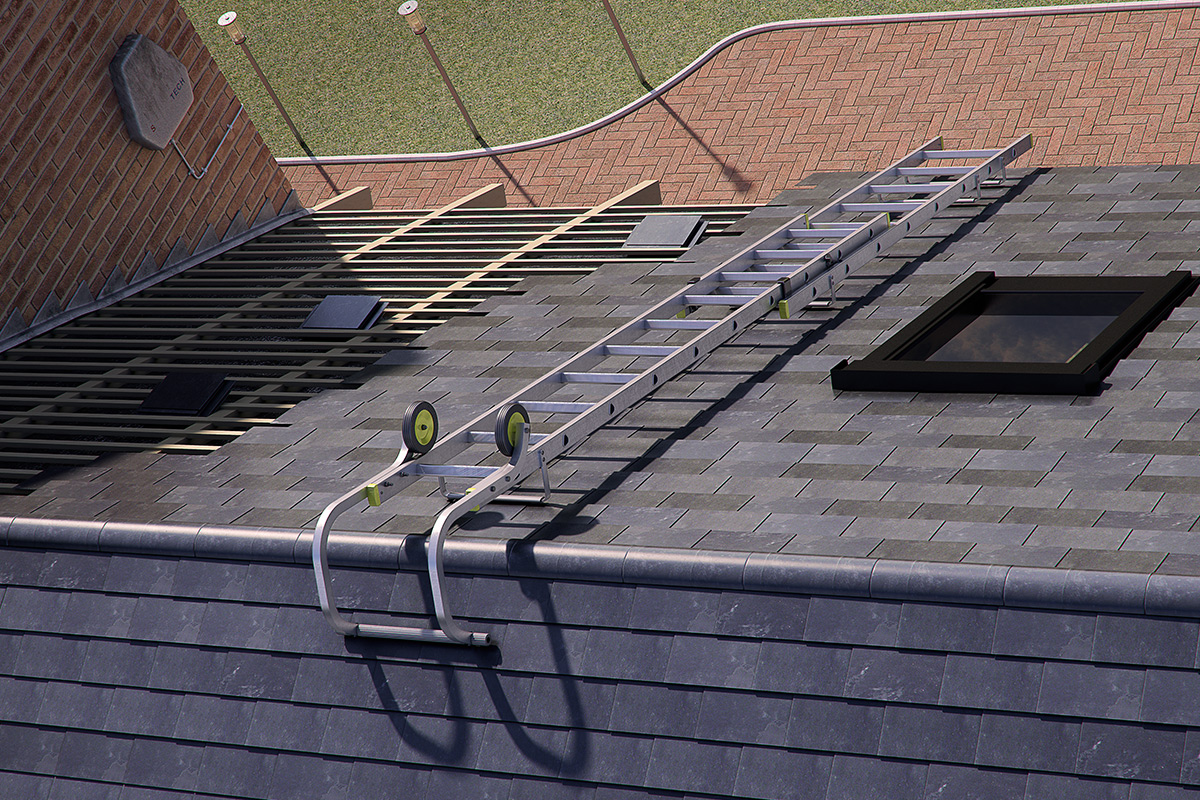
Depending on the job, there are ladders designed specifically for certain uses. From stepladders for cleaning windows to folding scaffold platform ladders for painting ceilings, it is important to choose the right type of ladder for your task.
When working on most roofs, you should use a roof ladder. Working high up can be dangerous, so proper safety procedures need to be followed every time. This includes using roofing ladders. These are designed specifically for working at heights, with a ridge hook at their top that rests against the opposite side of a pitched roof. Therefore, the ladder is kept securely in place for tasks such as fixing leaks, roof repairs, and solar panel installation.
If you have a roofing job coming up, you may be a little confused as to how to use roof ladders and what to look for. To help you, we have compiled this comprehensive guide on how to use a roof ladder, what to buy, and much more. Read on to find out all your roof ladder needs so you can work safely and securely every time. Roof ladders come in single section and double section designs, allowing you to choose the right one for your specific tasks.
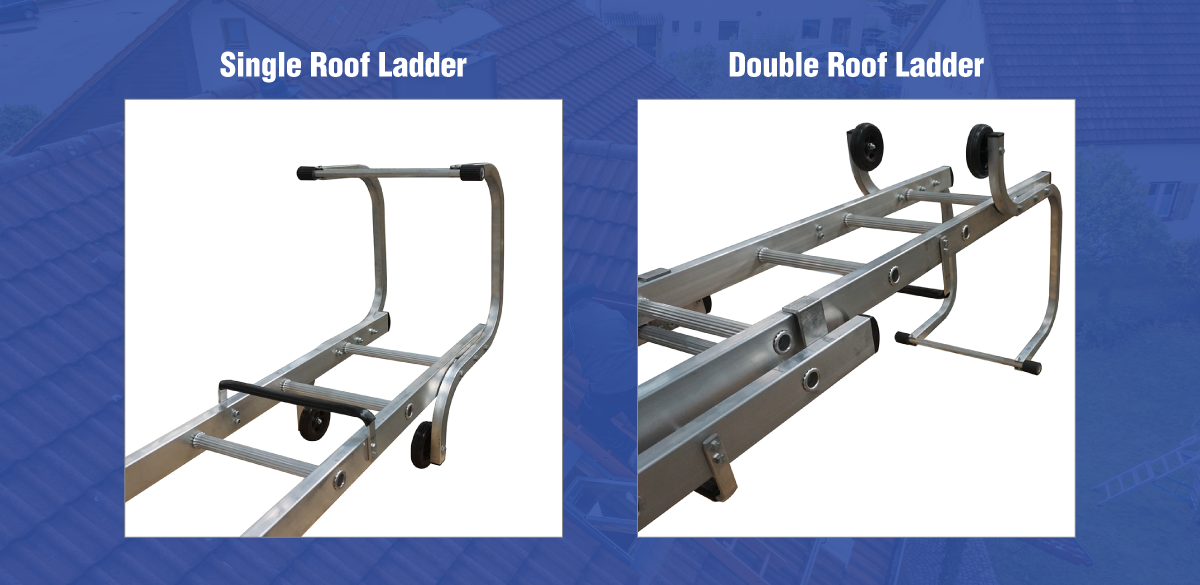
How to use a roof ladder
Before working on any type of roof, you need to prepare your roof ladder carefully and properly.
In most cases, you will need to use an extension ladder alongside a roofing ladder, so you can carry the roof ladder onto the roof. When using these extendable ladders, you need to make some considerations first.
Setting up your extension Ladder
- Start by ensuring the ground or surface is firm, stable, and strong enough to support the extension ladder, including when a load is applied. When set up, the ladder’s steps (rungs) should be horizontal.
- Set the ladder so it leans at a 75-degree angle to the ground. A Universal Stand-off is an excellent tool that holds your ladder clear of a wall for safe use.
- Make sure the ladder extends above the roofline by 3 rungs, giving sufficient handhold for climbing onto the roof ladder.
- To prevent the ladder from slipping, secure it towards the top or bottom. This can be done using a strong rope that is attached following safety standards, or with an anti-slip device, such as a ladder leveller. If these are not available, ask someone to hold the ladder and foot it at the bottom.
Top tip: When setting your extension ladder, use the 4:1 ratio rule – for every four feet in height, ensure your ladder’s base is one foot out from the building’s wall. This provides further stability and security.
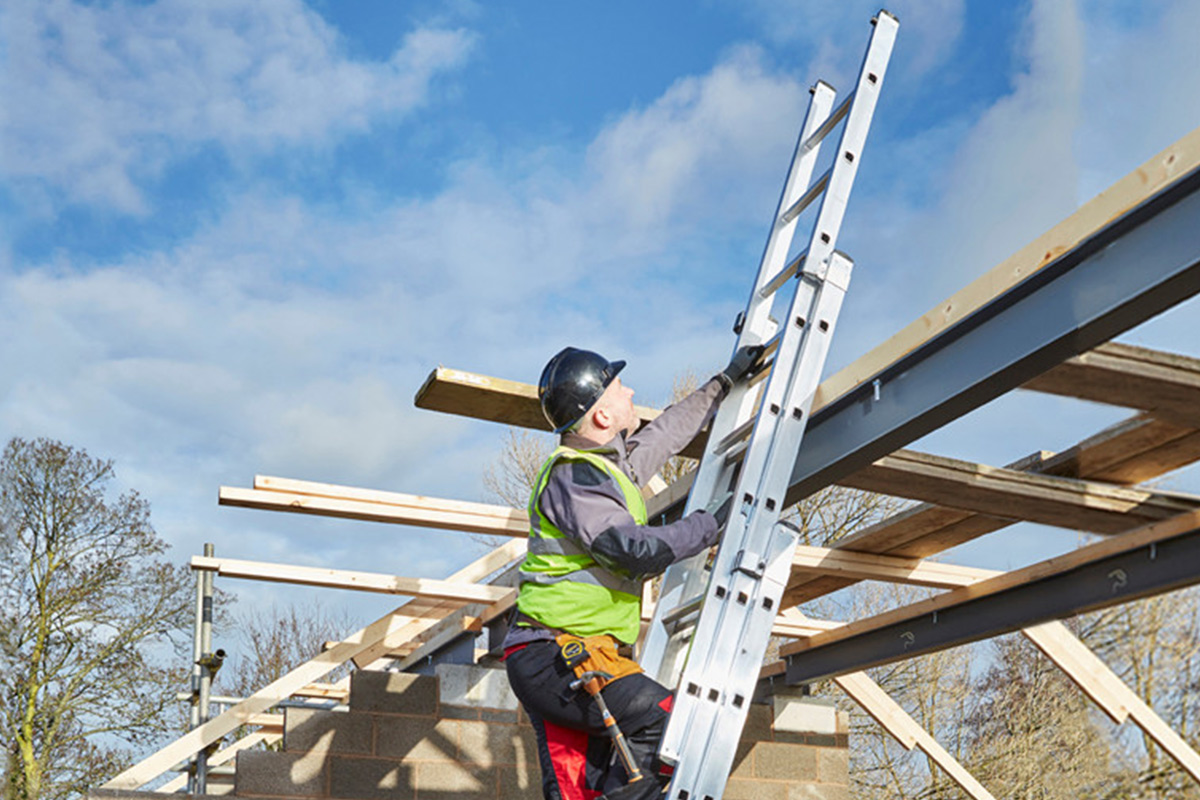
Setting up your roof ladder
Once your extension ladder is secure, it’s time to set up your roof ladder. Here’s how.
- Firstly, you need to carry the roof ladder up the extension ladder. If you feel unsafe doing this on your own, ask someone for help.
- A roof ladder is designed with wheels, so you can safely roll it along the surface of your roof without damaging any tiles or its surface. When positioning the ladder, ensure the wheels are on the roof and the ladder hooks are facing up. Doing so will give you better manoeuvrability so you can slide your roofing ladder into place.
- Once you have wheeled the roof ladder up to the ridge flip it over. When you find the rubber hook has gone past the ridge tile, slot the ladder into position. Then, pull it towards you lightly to make sure it is secure.of the roof. This will ensure the ladder will not move, so you are safe and secure when in use.
- Sometimes, you may need to extend the ladder so it reaches the roof’s peak. To do so, simply unlock its safety clips and extend it enough for the hooks to reach the rooftop securely.
- After you have the required length, lock the ladder’s safety clips into place.
When you are sure the ladder is completely locked into place, it should be ready to use for various projects and tasks. And, upon finishing your job, unfasten the roof ladder by completing the above steps in reverse.
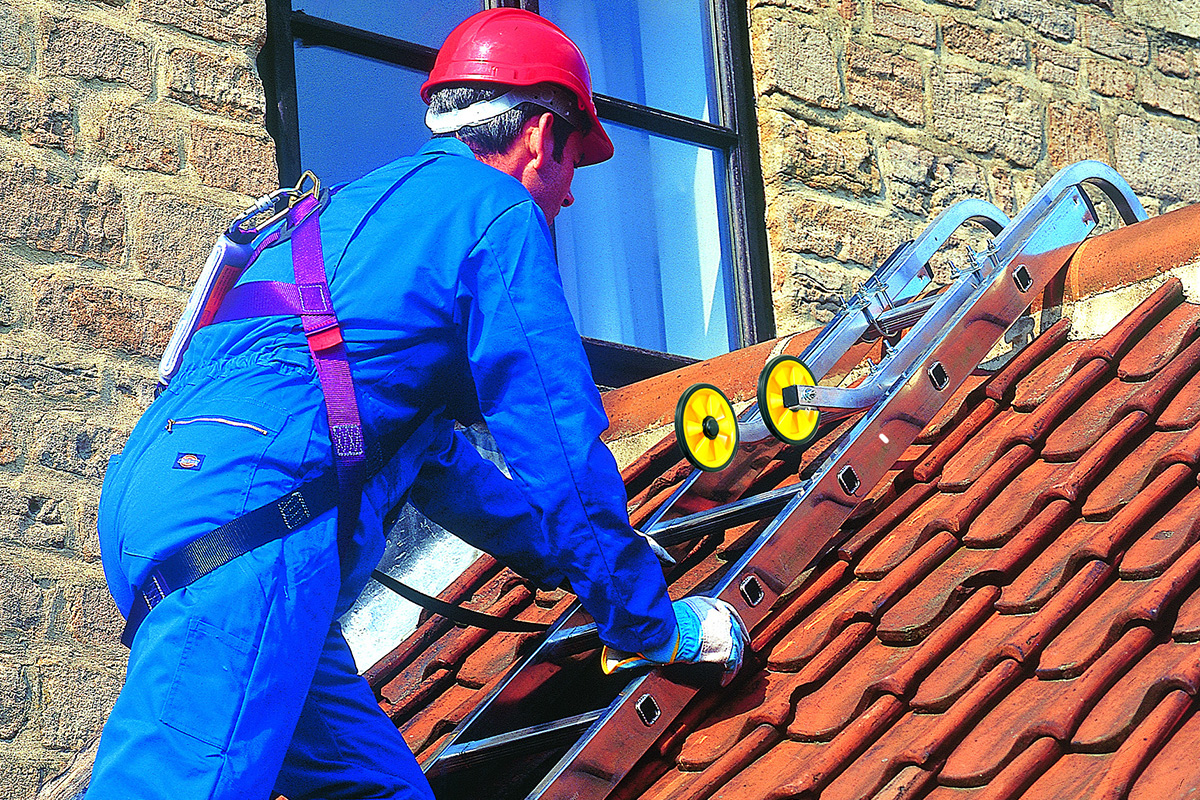
Bear in mind that working on roofs can be dangerous. Therefore, if you need to work on a roof for an extended period of time, you should consider further safety gear, like a fall arrest system, or a harness. For larger roofing jobs, scaffolding may be required.
What ladder do I need to use on my roof?
When working at heights, you need to consider how easy access is using a roofing ladder. Sometimes, things can be a little complex as many properties have various roofs, each with different heights (i.e., a high roof on top of a house and a lower roof above a garage or extension).
You will almost always need two ladders for working on a roof:
When it comes to roof ladders, you can choose between two types:
Single section roof ladder
Single section roof ladders are designed with strong ridge hooks on one end to secure over the peak of a roof. These ladders are typically sturdy but lightweight, providing a stable platform for tasks like gutter cleaning and roofing repairs.
When using a single section roof ladder, place the hooked end over your roof’s edge, making sure it is secure. From here, you can climb up with your weight centred to maintain proper balance.
Double section roof ladder
Double section roof ladders are made up of two sections that extend for further reach and flexibility. Like a single section roof ladder, a double section model features hooks on the end to attach securely over a roof ridge.
You would usually use a double section roof ladder for jobs such as roofing repairs or chimney maintenance. When using one, you can extend to your desired length and secure the hooks on the roof’s ridge.
If you need to spend long periods of time working on a roof, always prioritise a ladder that has a strong frame and lots of rubber grips. Modern roof ladders are designed with rubber non-slip technology, providing extra grip for the rungs and the base.
For smaller projects that are not at great heights, Combination Ladders should be suitable, coming in a range of materials and sizes.
Roof ladders suitable for different roofs
Not all roof ladders are suitable for all types of roofs. Only those that have a pitch angle between 25 and 45 degrees are appropriate. Ultimately, the ladder should be the right length for the task.
If it is too long, it will hang over the roof edge, becoming unbalanced. If it is too short, it will not be able to hook on to the roof securely. Therefore, you may need to step onto the actual roof, resulting in physical danger and possible damage to the tiles.
A roof must also be able to support the weight of a ladder and the user. Lightweight roofing systems, such as those made with sheets (polycarbonate), may not be strong enough. If you are unsure, consult with a roofing professional for guidance and help.
Final Thoughts
When working at any height, you need to make sure you have the right ladder and support so you remain safe and secure at all times. You can find out more about the relevant rules surrounding ladder use by reading The Work at Height Regulations 2005.
Be the first to know the latest industry news and offers
